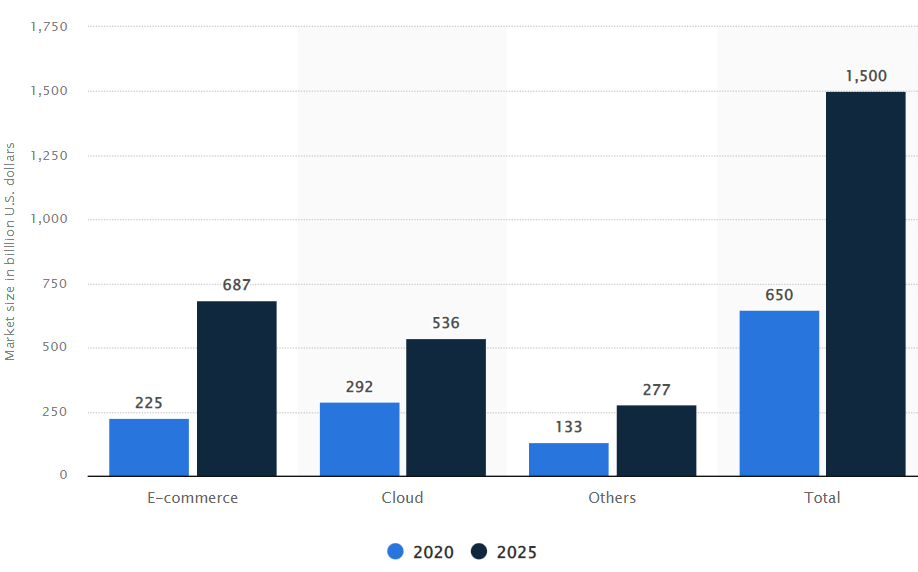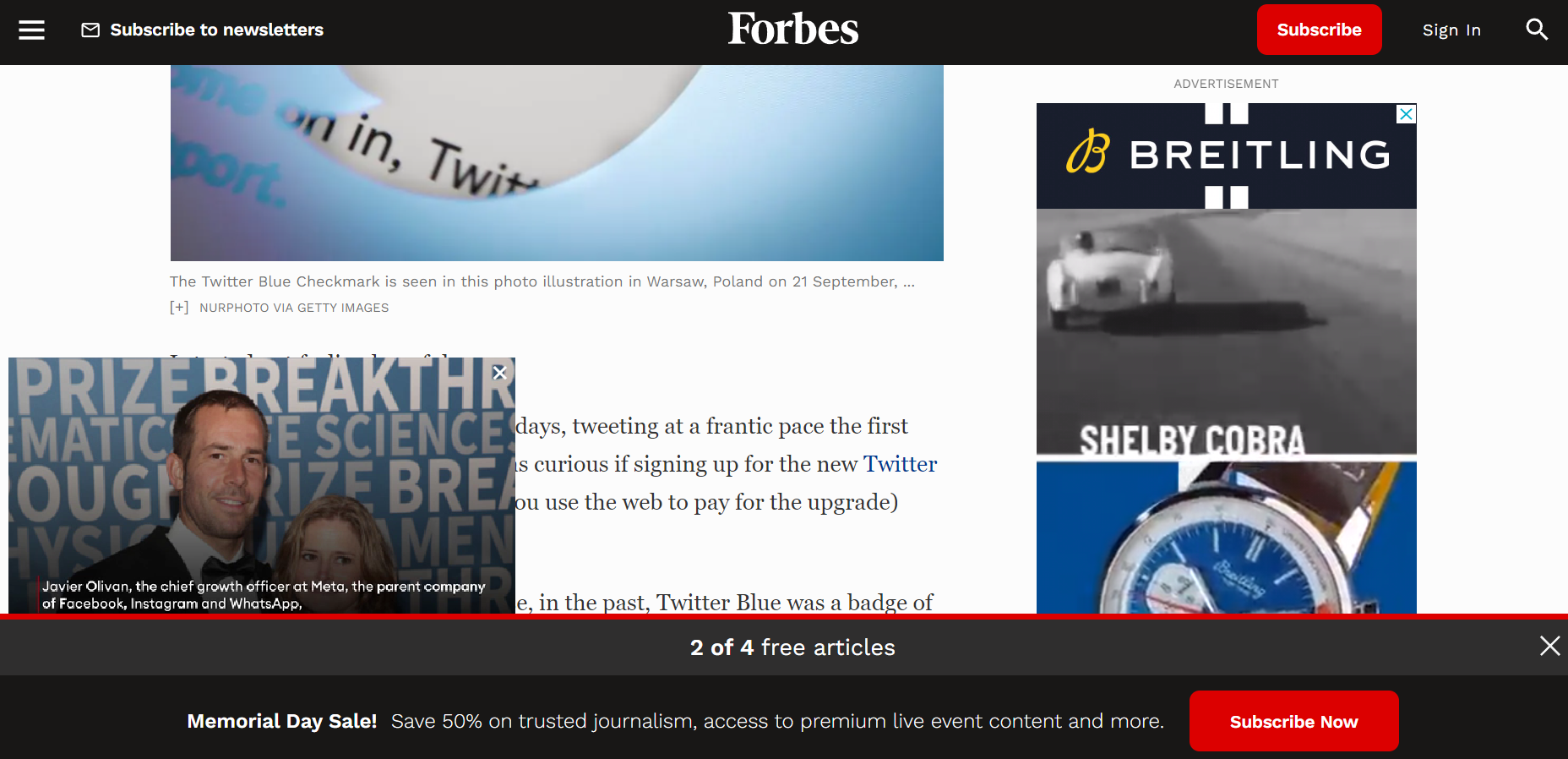What if you had to pay for every Google search you make? Or how would you feel if there was a cap on the amount of images you could post on Instagram before you had to pay a fee?
Most of us would no doubt baulk at the audacity of such a suggestion, but this is precisely the scenario we will likely face in the future. Paywalls, subscriptions and premium services may be nothing new, but they are undoubtedly on the rise.
Free services we have taken for granted for so long are now starting to change as businesses redefine their strategies, shifting their focus from advertiser-based revenue to income sourced directly from the customer’s pocket in exchange for a better user experience.
The free-for-all era
The early days of the internet heralded the dawn of a utopian digital landscape where information flowed freely and everyone had an equal platform to express their thoughts and ideas. We had the world at our fingertips and all (or mostly) for free. Great for users - not so great for the music industry, who could only look on in horror as people flocked to the likes of Napster, Kazaa or Limewire to download music for free (no more trips to HMV to part with £14.99 for an album! It was literally music to my 20 year old ears).
As the internet developed, more free services emerged online, including social media platforms like Facebook, then Twitter and Instagram and, more recently, TikTok. What was once an expensive and complex set up (publishing on the internet), became free for the masses in a matter of years.
Since the move to self publishing began, the big platforms have consistently operated under a similar business model: they collect data from their billions of users and sell it to advertisers who then use the data to push their goods and services. It’s a tried and tested system where everyone ends up a winner (kind of) and the user doesn’t have to put their hand in their back pocket.
This 'free internet' paradigm has held the reins for a significant portion of the web's history. From the vast encyclopaedias of information on Wikipedia to the tour de force that is Google, the internet thrived on the principle of unrestricted access. However, this golden age of free-for-alls may be coming to an end with the creeping emergence of paid services.
When did we first start paying for stuff?
Amazon was the one of the first big names to successfully capitalise on ‘freemium’ services (a business model where a free, basic service is provided alongside a paid service offering supplemental or advanced features) with the launch of its Prime membership in 2005, promoting fast and free shipping for an annual fee. Since then, it has expanded its benefits to include video and music streaming, cloud storage, e-books and more.
Other internet giants followed suit with their own freemium models. LinkedIn started offering premium plans that provide additional features such as InMail, learning courses and insights. Spotify allows users to stream music for free with ads, but also offers a premium subscription that includes ad-free listening and offline playback, and most recently - and somewhat controversially - Twitter has launched its ‘Blue’ subscription plan that offers users several exclusive features, such as a verified blue checkmark, longer tweets and increased visibility when replying to other users’ tweets. Oh, and Meta is also getting in on the verification action too with Meta Verified.
As a result, the digital subscription market is booming, and it’s only going to get bigger if forecasts are to be believed, with its total estimated value likely to reach 1,500 billion dollars in 2025, according to Statista:

This trend is also notably visible in digital journalism. Renowned media powerhouses like The Times, The Telegraph and The Washington Post have placed a significant chunk of their content behind paywalls.
While conducting research for this article, I encountered plenty of these paywalls firsthand. About half of the news sites I wanted to visit were inaccessible without a subscription. I was able to read a piece on Twitter Blue from the highly respected Forbes site but the page was littered with disruptive ads and an aggressively prominent paywall that sternly urged me to "SUBSCRIBE NOW".

With a cap of just four free articles and a cluttered screen featuring barely visible content, it’s not hard to see why users might be tempted to cough up a few quid a month for a less irksome service.
Why are we now having to pay for stuff?
Let’s face it, the free ride was fun while it lasted but perhaps it was always inevitable that the existing business model couldn’t be sustained forever. Over the last year we’ve seen Facebook and Instagram owner Meta lay off thousands of its staff while digital media companies Buzzfeed and Vice Media have both gone bust, the latter still owing $834 million in outstanding debt. Twitter has, of course, had its own problems, with Elon Musk making half its workforce redundant shortly after his arrival.

But why was it losing $4m a day? Elon (and others) would argue that Twitter was very overstaffed. Others say he has no idea about running a media company. But Twitter is just one example of a ‘tech’ business struggling in a changing world.
How did these internet big players end up in such financial dire straits? Let’s take a look at some of the driving factors:
- Inflation: The cost of producing and distributing content has risen over time, while the value of advertising revenue has declined or stagnated. This means that content providers have to find other ways to cover their expenses and generate profits.
- Competition: The internet is a crowded and competitive space, where users have many choices and alternatives for finding content. This makes it harder for digital and social media platforms to attract and retain audiences, as well as advertisers who want to reach them.
- Quality: The internet is also a space where low-quality content, ‘fake news’ and misinformation can affect credibility and reputation. To stand out from the noise and offer value to users, companies have to invest in quality, unique and original content that requires more resources and expertise.
- The end of cheap capital: The global pandemic, war in Ukraine and many other factors have affected the macro economy. Some argue the tech era was built and fuelled by a low interest world where, for a decade, access to cheap funding was readily available for thousands of businesses. Growth was the only game in town.
In a new world of high interest payments and less liquidity, real business problems like *generating profit* are the new cool. This means many businesses simply can’t survive in the hope of more money from investors where there is little or no profit to give confidence of a return.
What are the pros and cons of this new era?
This rise in premium services is not without controversy, with critics voicing concerns about the digital divide it could create. The internet was once considered the great equaliser, but if vital information and services become trapped behind paywalls, this could exacerbate existing social and economic inequalities. Additionally, there are apprehensions about the 'subscription fatigue' from users overwhelmed by multiple subscriptions.
But is it all bad news? Let’s delve a little deeper into the potential pros and cons:
Pros:
Enhanced quality content: The subscription / paywall model can lead to the production of higher quality content. It provides necessary funding for comprehensive research and in-depth journalism, enabling news outlets to hire talented writers, researchers and editors.
Filtering out low quality content: With a paywall in place, clickbait articles and sensationalist content may decline, as publishers are incentivised to produce engaging, high-value content that compels users to pay.
Countering fake news: By implementing rigorous journalistic practices, paywalls can help combat the spread of misinformation. This can build consumer trust and lead to an informed public discourse which appears to be desperately needed.
Cons:
Limited access: Paywalls limit access to content, creating a digital divide. Essential news can become unaffordable for many, impeding public access to information.
Subscription fatigue: With the explosion of online services, consumers may experience 'subscription fatigue,' as costs for multiple services add up. This could lead to consumers choosing free, but less reliable sources.
Potential for bias: While paywalls can diminish clickbait, they could indirectly encourage biassed reporting. Media outlets may lean towards stories that appeal to their paying subscribers, potentially skewing objectivity and continuing the populism and polarisation among many online audiences.
So is this the end of the free internet as we know it?
As all eyes are currently resting firmly on AI's seismic ascent, the ever-increasing prominence of paywalls may not be getting the level of attention it normally would.
Change is undeniably afoot, and the rise of premium and subscription-based models and paywalls is as a direct result of the challenges faced in the digital landscape where quality, competition and rising macro economic trends (read interest rates) are key factors.
“There’s been a learning curve and now the big thing is retention and monetization, how to raise the average price that people pay”
So are we on the verge of the internet morphing into a giant gated society where quality information becomes a luxury commodity? Or will ad-supported models remain the dominant force online?
My opinion is we’ll continue to see both - at least for the short term. After all, companies can’t change their business model overnight. That said, the rise of freemium services is a telling sign of the direction we’re heading in and it’s one I expect to grow slowly but surely in the next few years.
The question is: how much are we willing to pay for what we value?





